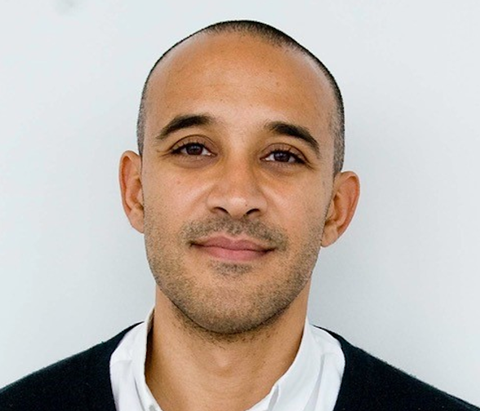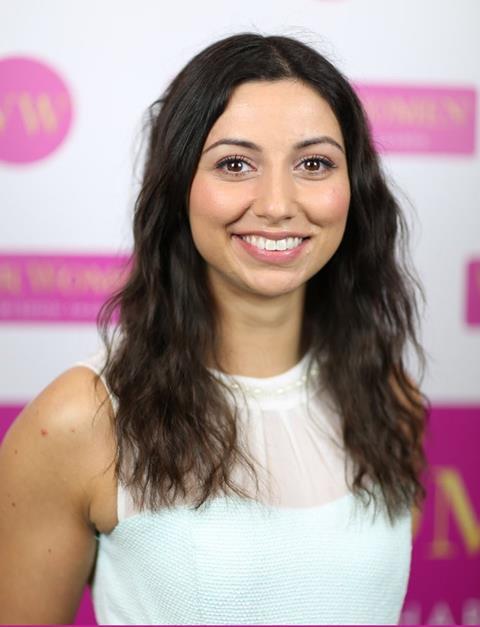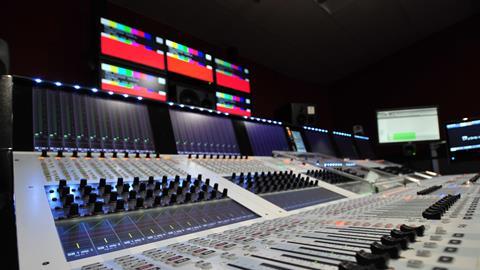Broadcasters have made commitments to boosting diversity, but progress has been patchy and a new report from the Sir Lenny Henry Centre shows shows that audio post-production in particular is lacking.
In 2020, diversity and equality have been near the top of the news agenda, thanks in part to the Black Lives Matter protests that have taken place around the world.
The BLM movement prompted global media and entertainment companies, including studios and broadcasters, to launch new schemes to promote diversity. These included massive investments and pledges to increase roles for people of colour.
But if the faces in front of the camera are becoming more diverse, the industry is facing challenges behind the camera and in the wider craft part of the industry – most notably, in post-production.
A report released last year by the UK Screen Alliance found the workforce behind the scenes is more diverse than you might expect, but some areas are struggling more than others.
“The way that we value different voices and sounds can be shaped and influenced by our lived experiences and our backgrounds. That is why we need more diversity in sound,” Marcus Ryder
Collectively, industry trade body UK Screen Alliance in conjunction with Animation UK and Access: VFX, surveyed of more than 1,150 workers. The results reveal a portrait of diversity that will challenge many of the preconceptions about these three sectors and their progress in achieving an inclusive workplace. There has been significant improvement in some respects, but there are areas where action is still required.
The report documents a significantly higher percentage of ethnic diversity in VFX, post and animation than the overall level of diversity, or lack of it, within the wider film and TV industry. In VFX, people of colour make up 19% of the workforce. For animation, BAME representation is 14% and in post-production it is 18%. All three sectors exceed the 14% UK average percentage for people of colour in the working-age population.
However, there is still a long way to go. “On screen representation has improved at a faster rate than representation behind the camera, and all the stats seem to support that,” explains Marcus Ryder, visiting professor of media diversity at the University of Birmingham. “But to their credit, most broadcasters recognise that behind the camera is a problem.
- Read more: Are broadcaster doing enough for diversity?
The big issue, he explains, is that a lot of the broadcasters have set numbers, such as the BBC’s 50:20:12 target that calls for 50% of its workforce to be female, 20% to be from an ethnic minority and 12% disabled workers.

“The trouble with that is that you might be able to achieve that, without actually improving diversity in some really important roles,” adds Ryder, who is also executive producer of new media for Chinese media group Caixin Global.
“You might be able to achieve that, without actually improving the diversity in sound, for example, or in post-production or in camera. What this shows is that the big numbers, which broadcasters announce, are not really as useful as drilling down to more detailed numbers, and having both specific targets and being really targeted in how you try and improve diversity.”
White noise
The issue of breaking down into subsections is the focus of a new series of studies being launched by the University of Birmingham’s Sir Lenny Henry Institute. The reports will take specific areas of the post-production process and the diversity of the teams which worked on major productions. They will work with practitioners in the industry to get closer to the topic so they can understand specific challenges within each sector.
“We think that one of the best ways in which to do this research is for practitioners and academics to work together,” adds Ryder. “Being a practitioner gives you an insight that academics alone don’t have.”
The first report, which is set to be published this week and has been shared exclusively with IBC365, looks at the diversity in the role of sound teams working on the top-rated UK shows (according to Broadcast magazine’s breakdown).
This research, conducted throughout August and September 2020, looked at TV shows across the Autumn period of 2019 on BBC1, BBC2, ITV, Channel 4, Channel 5 and Sky One and, using data from IMDB, assessed diversity in sound production for these shows. Research also involved interviews with a diverse range of professionals working in post-production sound to identify barriers to career progression in this area and evidences a worrying absence of diversity in post-production sound teams specifically in drama, entertainment and factual.
Across the 36 top rated shows, from the 2019 Autumn period, there was 60 available sound roles which were filled by 55 individuals, according to the study, which was carried out by sound engineer Emma Butt.
“Broad numbers, the big numbers, hide the actual specific experiences, and the actual specific experiences -once you drill into them, are that in large parts of the industry diversity and representation is very bleak,” Marcus Ryder
In the sample, 49 of those sound roles were filled by men and just six filled by women. Of the 49 men, just one identified as mixed race. There were no women of colour working in the 60 roles and only three of those 55 workers identified as having a disability, none of which required physical adjustments to their working environment.
Of the 36 shows there were 60 roles that fell into the categories of dialogue editor, sound effects editor or re-recording mixer. In terms of racial diversity, this research found that across all channels, only one mixed-race person was involved in the post-production sound teams for the highest rated shows in the sample and they identified as male. In this instance this person made one show for Channel 4. No other sound team from within the sample included someone from a Black or ethnic minority background of any gender.
In terms of gender diversity, the highest rated shows produced for BBC1 and BBC2 included only three white women. For ITV shows included in the sample, the same individual white woman worked across two separate productions. Channel 4 had no women in their post-production sound teams across any productions.
For Channel 5’s shows included in the sample there was one white woman who worked on one production. This show also represented the only instances where a woman held the role of Re-Recording mixer. Sky One’s shows included in the sample evidence the inclusion of only one white woman on a team which worked on two separate productions.
- Read more: Covid could damage diversity
Ryder explains: “Unfortunately it’s not surprising. It confirmed what many of us who are in the industry already suspected. The issue is that invariably we get broad numbers saying that diversity in the industry is this, or the number of women is that, or the number of black and Asian people is improving. But that does not reflect the actual reality of people in industry. Broad numbers, the big numbers, hide the actual specific experiences, and the actual specific experiences -once you drill into them, are that in large parts of the industry diversity and representation is very bleak.”

For Butt - a dubbing / re-recording mixer, dialogue and SFX editor and ADR recordist – audio is an overlooked area.
“For an industry that has been talking for years about the need for diversity, especially in front of the camera and slightly behind the camera, it isn’t reaching sound,” she explains. “Sound is never discussed or highlighted as an area where there is concern about a lack of diversity when it should be.”
As Butt says, sound makes up a huge part of any production, yet few diversity initiatives have looked at the lack of people of colour, or gender disparity, within sound roles.
To carry out the report, Butt interviewed several people from within sound engineering roles. One, who is a person of colour, told of meetings with new clients where they had to bring along a white, male colleague with them to put the client at ease. As a black man, they found that some clients would feel intimidated if it were just them, reducing their chances of getting the role.
“In this day and age, that shouldn’t be the case,” Butt adds. “You shouldn’t feel that you need to bring someone who’s a white male colleague along with you to a business meeting about a project. And I think that was that was the one that really stood out to me and I was just thought it wasn’t right.”
Butt’s interviews also unveiled cases of sexism, such as an incident where a freelance woman was engaging with a sound supervisor about a role. The supervisor then asked “what if you engage in a relationship with one of the men on my team, and that disrupts our work or creates an awkward atmosphere. I can’t have that.” She ultimately did not get the job.
Butt says there has been too few initiatives looking at increasing diversity in specific roles, such as sound editing, across post-production, while other departments have been actively improved.
“Young people of colour, or young women, are often struggling to get their feet on the ladder,” adds Butt.
“But we also have a problem at the other end, at the mid or upper career levels. The industry faces problems with hiring structures which limit opportunities for new faces, as producers with limited budgets turn to safe and familiar hands to carry out post-production roles, who are more likely to be white and male. “It’s a chicken and egg situation,” adds Butt.
Sounds of a solution
What is the solution, I ask? Butt says whatever initiatives are brought in to try to increase diversity, they need to come from the top levels of the industry, and there needs to be a greater eye cast on the more niche roles and subsectors within productions.
“When someone is commissioning a show, they need to apply diversity quotas to craft roles, not just on-screen talent,” Butt says. “Until that happens, nothing is going to change.
“People are so stuck in their ways now, and so stuck with their little black book of contacts who they know, and they trust. That cycle has to be broken.”
Ryder agrees. “We are still working within an oligopoly,” he adds. “The industry is still led by a few broadcasters, streamers and massive indies. In that sense, it is incumbent on those people who can shape the industry to take a leading role. That does not mean responsibility stops at their door, but they do have a massive responsibility for what our industry looks like.”
Next, the Sir Lenny Henry Centre will look at other areas of the industry, pairing academic leads with people within the industry, leveraging their expertise, to investigate diversity in other areas.
“People are so stuck in their ways now, and so stuck with their little black book of contacts who they know, and they trust. That cycle has to be broken,” Emma Butt
“This was a pilot programme,” adds Ryder. “We will now role out five grants a year to help practitioners work with academic leads to produce reports into different areas of the industry.
“We need to look at careers that have done well [in these niches] and where they are dropping off. We need to see if it is a training problem, or a pipeline problem, or best practices in the industry, and how this applies across different crafts.
This is important, he adds, because increasing diversity will also increase the way content is created.
He concludes: “Often people who do not work in television think that these roles are incredibly technical, but within those sectors, there are very subjective elements. In sound, different people hear sounds differently.
“The way that we value different voices and sounds can be shaped and influenced by our lived experiences and our backgrounds. So, that is why we need more diversity in sound recording and that is why we need more diversity in craft roles which some people think of as being just purely technical.”




























No comments yet